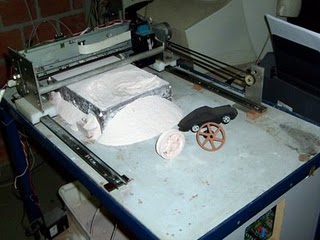[Source: Needpix]
Charles Goulding of R&D Tax Savers examines 3D printing business possibilities in the face of economic uncertainty.
George Marshall, the great American General, oversaw the Washington, D.C. central operation that enabled America and the Allied powers to win World War II while our other great General, Dwight D. Eisenhower, managed the battleground operations. General Marshall had the foresight to know that the war had not been over with the last surrender and that America needed to help finance and support the rebuilding of Europe and Japan to return to economic prosperity and ensure national security.
In 2019, David L. Roll published his almost 700-page book entitled George Marshall Defender of the Republic that I consider a masterpiece. The book describes General Marshall’s ability to focus and execute detailed plans for both wartime actions and post-war recovery.
Presently, with the severity of the coronavirus, there is almost uniform consensus that the world is going to have to accept immediate and large fiscal deficits to reboot the world economy.
One of the unorthodox approaches is the so-called “Helicopter Drops”, which involves printing money and giving it out to almost everyone with no strings attached. On the individual side, some of the Helicopter Drops have already or will soon occur. Hong Kong, which is reeling from a series of economically adverse events, has already transferred a handout of almost $1,300 to all residents financially impacted by the virus, and the first U.S. stimulation plan currently being formatted has a cash payment provision.
The 3D printing industry should keep a watchful eye on the worldwide business stimulation provisions currently being formulated. In the interim, helicopter funding may provide one of the few immediate business opportunities while the economy is slowly recovering. During this economic crisis, the U.S. has learned what worked and what flopped when it comes to identifying and funding shovel-ready energy and infrastructure projects. With all North American auto plants closed, a “cash for clunkers program” could be reinstated. The airline industry, including Boeing and its Tier suppliers, have been decimated by both the coronavirus and manufacturing suspension.
![U.S. Air Force Staff Sgt. Montana Engelking, 100th Maintenance Squadron aircraft metals technology welder machinist, holds a 3D printed example at RAF Mildenhall, England [Source: U.S. Air Force ]](https://fabbaloo.com/wp-content/uploads/2020/05/3D-Printed-Aircraft-Component_img_5eb0652e64967.jpg)
U.S. Air Force Staff Sgt. Montana Engelking, 100th Maintenance Squadron aircraft metals technology welder machinist, holds a 3D printed example at RAF Mildenhall, England [Source: U.S. Air Force]
The 3D printing industry has grown and made great technical strides since the last financial crisis. There is now a much wider range of products, materials, and solutions for aircraft and auto components, as well as energy and construction projects.
R&D tax credits are available for those companies that can develop new and improved products and related materials for the solutions necessary for economic recovery.
The Research & Development Tax Credit
Enacted in 1981, the now permanent Federal Research and Development (R&D) Tax Credit allows a credit that typically ranges from 4%-7% of eligible spending for new and improved products and processes. Qualified research must meet the following four criteria:
-
Must be technological in nature
-
Must be a component of the taxpayer’s business
-
Must represent R&D in the experimental sense and generally includes all such costs related to the development or improvement of a product or process
-
Must eliminate uncertainty through a process of experimentation that considers one or more alternatives
Eligible costs include US employee wages, cost of supplies consumed in the R&D process, cost of pre-production testing, US contract research expenses, and certain costs associated with developing a patent.
On December 18, 2015, President Obama signed the PATH Act, making the R&D Tax Credit permanent. Beginning in 2016, the R&D credit can be used to offset Alternative Minimum tax for companies with revenue below $50MM and, startup businesses can obtain up to $250,000 per year in payroll tax cash rebates.
Conclusion
Governments throughout the world are going to be engaged in big spending until the economy recovers in what will most likely be a multi-year process. The 3D printing industry needs to consider reformulating and integrating its own business plans with the fast-developing, global Marshall-like plans.


![[Source: Needpix ]](https://fabbaloo.com/wp-content/uploads/2020/05/Economic-Boom_img_5eb0652e316b3.jpg)